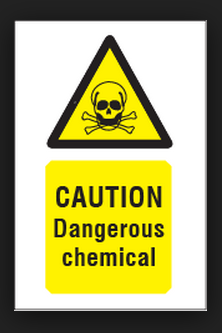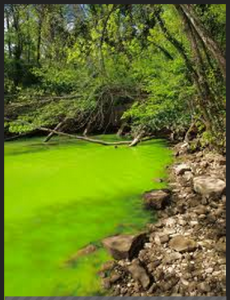Five years ago, the crop yield was splendid. That was in stark contrast to this year as the yield had been poor. The farmers did not know what went wrong but something somewhere certainly did. The reason is: Chemical fertilizers.
Chemical fertilizers are chemical compounds that provide essential nutrients required by plants for rapid growth and development that are applied to the soil available for crops. Mostly, these chemicals get dissolved in water and are easily absorbed by the plants. At one hand, these chemicals give instant results as far as higher yield is concerned but on the other they show slow and long lasting negative results too. The biggest issue is that most of the present day commercial fertilizers are required in very large quantities as compared to the small change in yield that they give. Most of the fertilizers are toxic to varied levels to the plants, the soil, humans and the environment as well.
How are chemical fertilizers damaging economically?
• Chemical fertilizers are soluble in water. Hence, a very large quantity is required as almost one third of the fertilizer gets leached in the soil. They also get carried away as surface sun-offs along with excess water.
• Life span of the chemicals is short and need to be applied regularly to the soil.
• Fertilizers do nothing to better the soil quality. The synthetic nature of the chemical fertilizers does not add to the texture of the soil, which is essential for good absorption by roots.
• The primary component of fertilizers is soluble Nitrogen. The nitrogenous microbes in the soil use up a lot of Nitrogen as well as the other organic nutrients naturally present in the soil. This regular cycle depletes the soil nutrient content.
• These fertilizers have high salt levels. There is always a salt burn risk which dehydrates plant tissue.
• Excess of macro nutrients (from the fertilizer) bind with the trace elements present naturally in the soil, resulting in trace elements unavailability for the plants.
• Excess Phosphorus can accumulate in the soil causing pollution issues.
• Fertilizers get caked in storage easily.

However, chemical fertilizers are far more harmful when it comes to human health and the environment:
• Urea is a primary component in all fertilizers. Urea is toxic to humans and animals and causes several nervous and gastrological problems if ingested. Large doses of urea cause renal failure.
• The high amount of nitrates and nitrites that enter streams and water bodies as a point source pollutant along with the surface run off cause the ‘Blue Baby Syndrome’ or Methemoglobinemia at the neo-natal stage. This results in still births or babies born with a blue colored skin, due to low oxygen levels. Most babies die shortly after.
Miscarriages are also a common phenomenon due to heavy metal poisoning.
• Oral health is deterred by fluorides present in water contaminated by fertilizers.
• Bioaccumulation and Biomagnification are two related terms when we talk of the adverse effects of fertilizers. The toxic chemicals present in the fertilizers enter the food chain and accumulate at each trophic level. As the trophic level increases, the hazardous effect is the highest or magnified as that individual ingests the highest amount of chemical accumulation. In most cases, humans occupy the highest trophic level and are worst hit.
• Cancer of the lung, kidney and liver may also occur if the amount of fertilizer consumed is high.
• These microbes are essential for keeping balance in the various compounds of certain elements through the biogeochemical cycles. Without these microbes, soil loses its fertility.
• The soil also becomes loose and prone to erosion by the excessive use of fertilizers.
• Fertilizers cause leaching of the soil and depleting its natural quality.
• When the excessive nutrients from the fertilizers reaches water bodies, especially stagnant ones like lakes and ponds, eutrophication occurs. This phenomenon is characterized by excessive algal bloom all over the pond’s surface due to the excess nutrients available. The algae use up most of the dissolved oxygen present in the water, thus, killing the aquatic life for want of oxygen. The Biological Oxygen Demand (BOD) increases manifold due to the dead and decaying organic matter making it even more difficult for the remaining organisms to survive.
There are several such issues that are related to chemical fertilizers which are very much harmful to the environment. But there are always ways to replace chemical fertilizers by non-hazardous fertilizers and remedy the soils spoilt by chemical fertilizers:
• Green Manures: A quick growing crop is grown and mulched down on the land before growing the commercial crop. The organic matter provides the required nutrients.
• Organic fertilizers: A mixture of organic matter with water may be applied on the fields.
• Farmyard Manure: Cattle feces and cow dung act as excellent fertilizers and add to the humus content of the soil.
• Biofertilizers: Use of microbes that naturally fix Nitrogen or Phosphorus and make them available to plants may be used in symbiotic relationships to benefit the cash crop. For example, Azollae anabaena is a cyanobacterium that lives on the fresh water fern Azolla. Adding this system to the waters of rice fields has shown amazing results in nitrogen fixation and thus, a better yield.
• Bioremediation of spoilt lands can be done by inoculation of pollutant degrading microbes in the affected areas. Although bioremediation is effective, results are not seen overnight and need a longer period of time to restore the soil.
Chemical fertilizers are a living reality globally. No crop succeeds these days without this support. However, in the long run, a sustainable environment requires better alternatives. If we take care of the land like Nature intended it to be, there would be no necessity of using these hazardous chemicals.


Leave a Reply